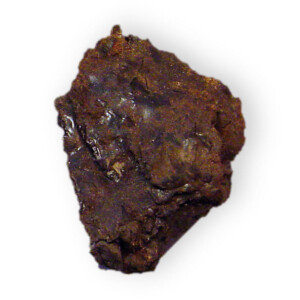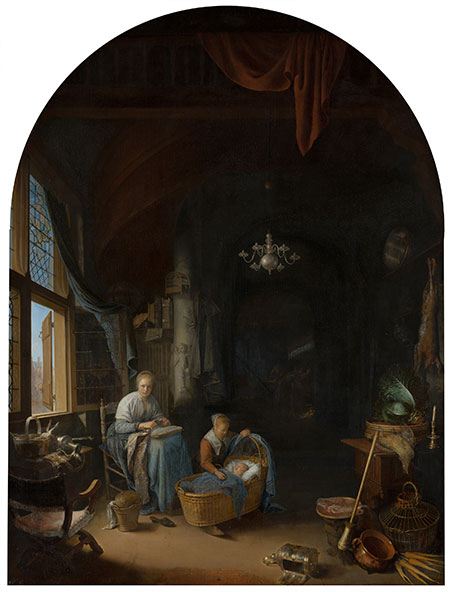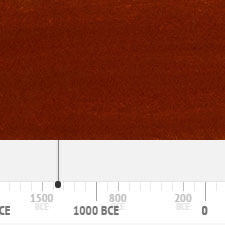Asphalt
Natural organic pigmentComposition and Properties of Asphalt
Asphalt is an exceedingly complex mixture of organic (bitumen) and inorganic components which cannot be characterized by a single chemical formula. Bitumen is a mixture of organic compounds with high molecular mass and consists mainly of hydrocarbons. The mineral components also vary according to the location where the mineral was found and contain in the majority of cases aluminum silicates and carbonates and also oxides of silicon, aluminum, iron, and calcium (1).
The pigment can harden on contact with oxygen in the air and visible and ultraviolet light can change the appearance of its components with conjugated double bonds in their molecules, but the sensitivity to light has not been investigated in sufficient depth to make a positive statement about this property. No agreement exists in the literature about the feasibility of mixing this pigment with other pigments.

Pigment

Painted swatch
Names
Alternative names
Spaltam, aspalathum, (bitumen)
Color Index
Natural black 6, NBk 6
Word origin
From Late Latin asphaltum, from Greek asphaltos “asphalt, bitumen,” often said to be from Greek a– “not” + *sphaltos “able to be thrown down,”
From Online Etymology Dictionary
Asphalt
German
Asphalte
French
Asfalto
Italian
Asfalto
Spanish
Preparation
Asphalt can be found in nature as a mineral. It can also be prepared industrially by the evaporating of petroleum. This product is known under the name of refined bitumen.

Mineral

Refined bitumen
History of Use
The use of asphalt as pigment goes back to prehistoric times. Due to the difficulties in the identification of this pigment in paintings only two accounts of its actual identification in paintings have been published (see below). However, there are many mentions of its use in the literature (3).
References
(1) L. Struick van der Loeff and K. Groen, The Restoration and Technical Examination of Gerard Dou’s The Young Mother in the Mauritshuis, in ICOM Committee for Conservation Preprints, 10th Triennial Meeting, Washington D.C. (Paris 1993), 98-103. Quoted in (3).
(2) K. Groen, A 17th-century use of bituminous paint, Hamilton Kerr Bulletin (Cambridge), 2 (1994); 84. Quoted in (3).
(3) Catarina I. Bothe, Asphalt, in Artists’ Pigments, A Handbook of Their History and Characteristics, Vol. 4, Berrie, B.H., Ed., National Gallery of Art Washington, 2007, 111-149.
Examples of use
Gerrit Dou, 'The Young Mother', 1658

Identification
Fiber optics reflectance spectra (FORS)
Reflectance Spectrum of bitumen in the Pigment Checker Spectroscopy Database, CHSOS website.
Raman Spectrum
Raman Spectrum of bitumen in the Pigment Checker Spectroscopy Database, CHSOS website.
References
(1) H. Blochová, Identification of Materials: Bitumen, in Technologia Artis, Prague.
Further Reading
References
(1) Catarina I. Bothe, Asphalt, in Artists’ Pigments, A Handbook of Their History and Characteristics, Vol. 4, Berrie, B.H., Ed., National Gallery of Art Washington, 2007, 111-149.
S. Muntwyler, J. Lipscher, HP. Schneider, Das Farbenbuch, 2nd. Ed., 2023, alataverlag Elsau, pp. 168-169.


